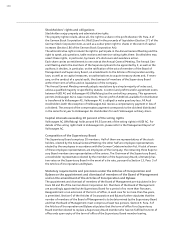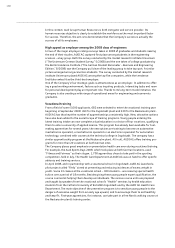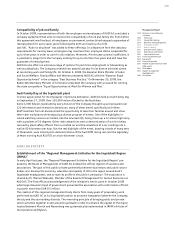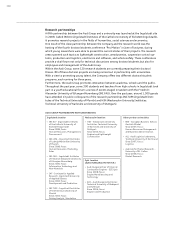Audi 2008 Annual Report Download - page 153
Download and view the complete annual report
Please find page 153 of the 2008 Audi annual report below. You can navigate through the pages in the report by either clicking on the pages listed below, or by using the keyword search tool below to find specific information within the annual report.
134
RESEARCH AND DEVELOPMENT
In developing and marketing innovative technical concepts, the Audi Group has played an
instrumental role in shaping the modern automotive industry. The Company again brought
numerous innovations to production maturity in the past fiscal year.
The total number of employees in the Research and Development area averaged 6,556 (6,230)
over the year, comprising 6,293 (5,993) at AUDI AG, 116 (107) at AUDI HUNGARIA MOTOR Kft.
(Győr, Hungary) and 147 (130) at Automobili Lamborghini S.p.A. (Sant’Agata Bolognese, Italy).
RESEARCH AND DEVELOPMENT EXPENDITURE RECOGNIZED AS AN EXPENSE
EUR million 2008 2007
Research expense and non-capitalized development costs 1,631 1,570
Amortization and disposals of capitalized development costs 530 656
Total research and development expenditure recognized as an expense 2,161 2,226
Technical innovations
Efficient e model for the full-size category
With the launch of the first e models in 2007, the Audi brand was again able to demonstrate
that sportiness and efficiency are not a contradiction in terms. This ultra-economical, low-
emission vehicle concept is now also available in the full-size category.
The Audi A6 2.0 TDI e, with a power output of 100 kW (136 hp) and peak torque of 320 Nm,
achieves an impressive average fuel consumption of 5.3 liters of diesel fuel per 100 kilometers.
Its CO2 emissions are a scant 139 g/km.
2.0-liter TFSI engine is the “International Engine of the Year”
Last year, for the fourth time in a row, a jury of 65 leading motor journalists from 32 countries
voted the 2.0-liter TFSI engine the winner of the “International Engine of the Year” award
(May 7, 2008). The engine was particularly commended for its high efficiency and its flexibility,
which makes it suitable for use in the various vehicle models. The four-cylinder gasoline unit
made its debut in summer 2004 in the Audi A3 Sportback. The Audi Group is currently offering
its newest and most powerful version, which has 200 kW (272 hp), in the Audi TTS Coupé and
Roadster. In these two ultra-sporty models, this power unit combines with the S tronic dual-
clutch transmission to achieve a very good average fuel consumption of 7.9 and 8.0 liters of
Super Plus gasoline per 100 kilometers respectively. This equates to CO2 emissions of 184 and
187 g/km respectively.
Inventor of the Audi valvelift system (AVS) receives the “Hans List Award”
During the FISITA World Automotive Congress, AVL List GmbH (Graz, Austria) presented Audi
engine developer Dr. Stefan Dengler with the “Hans List Award” (September 19, 2008), which
is given to honor the achievements of innovative engineers. Dengler, a mechanical engineer,
received EUR 50,000 in prize money for developing the Audi valvelift system (AVS). The system
permits intelligent control of the intake and exhaust valves on gasoline engines, thereby in-
creasing their power and torque while improving their fuel efficiency.
The Audi valvelift system demonstrates its strengths in the Audi A4 2.0 TFSI among others.
With an output of 155 kW (211 hp) and peak torque of 350 Nm, this front-wheel drive sedan
with manual transmission averages 6.6 liters of premium gasoline over 100 kilometers. It has
CO2 emissions of 154 g/km. This progressive engine technology is also used in many other
models of the Audi brand.
The Audi Group believes the Audi valvelift system offers tremendous potential for further im-
provements to the efficiency of gasoline engines. Future versions could even conceivably shut
off individual cylinders altogether.
























